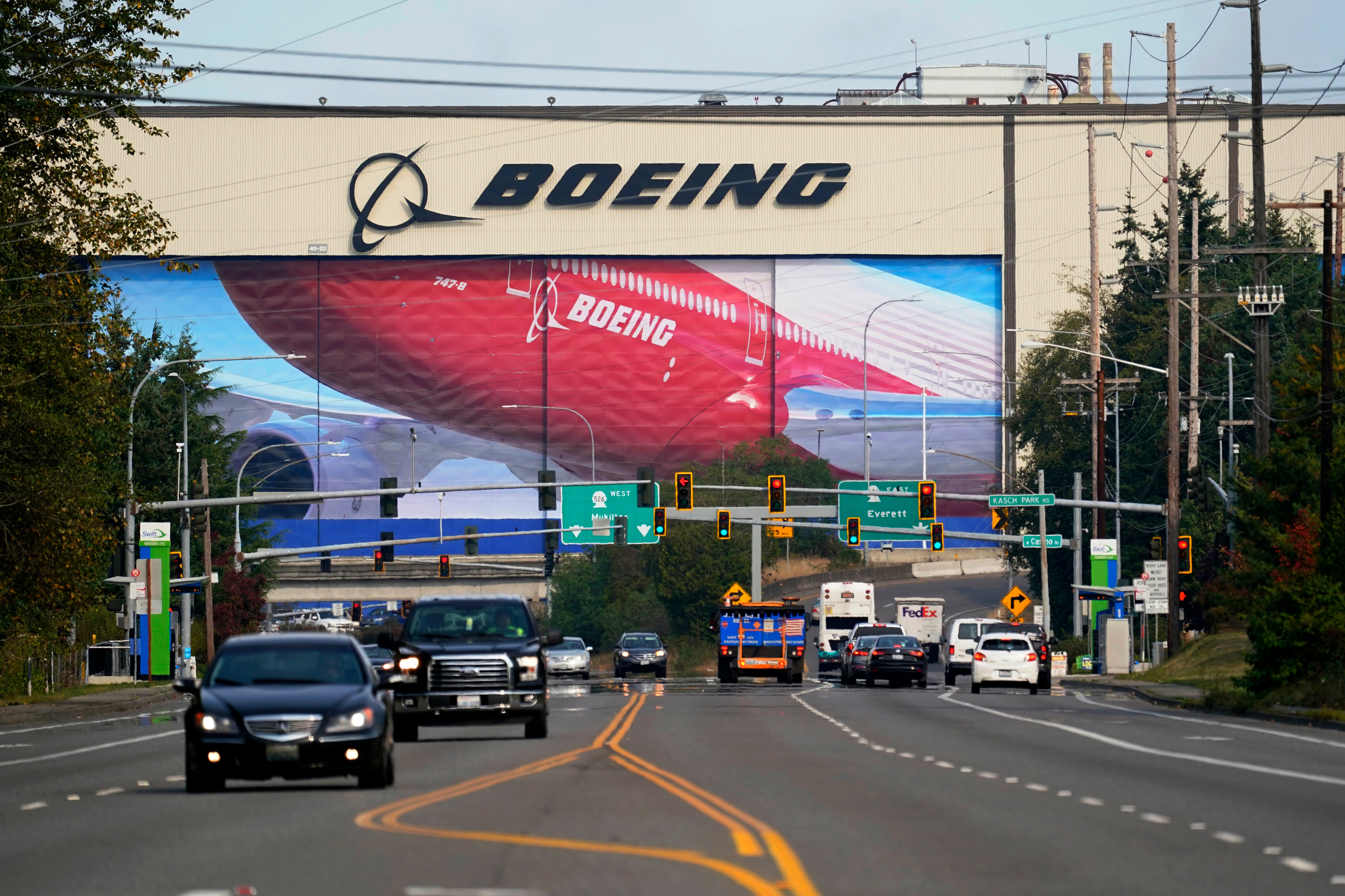Boeing picks South Carolina over Seattle for 787 production
Boeing says it will build all of its larger 787 jetliners in South Carolina and shut down an assembly line in the Seattle area next year

Boeing said Thursday it will shut down the original assembly line for its two-aisle 787 jetliner near Seattle and consolidate the plane s production in South Carolina as the airline industry tries to weather the global pandemic.
The move will begin in mid-2021. The company intends to keep assembling other jetliners — the 737, 747, 767 and 777 — in the Seattle area.
“Consolidating to a single 787 production location in South Carolina will make us more competitive and efficient, better positioning Boeing to weather these challenging times and win new business,” Stan Deal, CEO of Boeing’s commercial aircraft business, told workers in an email.
The company did not immediately say whether jobs would be eliminated in the move, but Rep. J.T. Wilcox, the Republican leader of the state House of Representatives, posted on Facebook following a call with the company that the decision would affect about 900 jobs in Washington state.
Boeing had a statewide workforce of more than 70,000 people before announcing in April that it was cutting 10% of its employees.
The 787 is used mostly for international routes. Washington state in 2003 granted Boeing massive tax breaks — amounting to about $100 million a year — to entice the company to assemble the plane in the state. The subsidies were revoked earlier this year after the World Trade Organization found them illegal.
Washington Gov. Jay Inslee called Thursday's decision on 787 prodiction “an insult” and said the state would have to review tax breaks Boeing continues to receive.
“I understand the serious market forces Boeing faces today,” Inslee said. “What I don’t understand is why the company can’t commit to restoring production here when the market for this plane improves.”
Employees at Boeing's plant in Everett, Washington, began building the 787 in 2007, turning out a jetliner with a largely carbon composite fuselage for better fuel efficiency.
The company had fuselages built in North Charleston, South Carolina, then shipped across the country for assembly. In 2011 it opened a 787 final assembly line in South Carolina, picking South Carolina largely for its anti-union culture, following strikes by Seattle-area machinists in 2005 and 2008.
“We are committed to helping Boeing — and businesses large and small — grow and prosper in our state," South Carolina Gov. Henry McMaster said Thursday. "Today’s announcement is a testament to our hardworking people, and to the fact that companies know they can find long-term success right here in South Carolina.”
Boeing announced this summer that it was studying the possibility of combining all 787 production at one location, and the newer South Carolina plant soon emerged as the favorite. Workers in Everett will continue making the smaller 787-8 and 787-9 models until the company cuts production to six 787s a month next year, the company said.
Lawmakers and union officials in Washington state said Boeing was wrong to abandon the skilled aerospace employees who worked on the 787 in the state.
“We believe Boeing is making a mistake,” said Ray Goforth, executive director of the Society of Professional Engineering Employees in Aerospace.
“SPEEA’s immediate focus is supporting the members who will be laid-off," he said. "Long-term we will partner with community stakeholders to attract aerospace jobs to the state by marketing the aerospace talent pool Boeing is walking away from.”
Democratic U.S. Rep. Rick Larsen, whose district includes Everett, said he would fight to bring 787 production back to Washington once air travel rebounds.
“The strength of the Pacific Northwest’s aviation and aerospace industry includes the region’s strong education system, trained workforce, robust supply chain, extensive manufacturing experience and overall quality of life,” Larsen said. “We have earned our place as the leader in the U.S. aerospace industry and will continue to earn it.”
___
Associated Press writers in David Koenig in Dallas and Rachel La Corte in Olympia, Washington, contributed to this report.
Bookmark popover
Removed from bookmarks